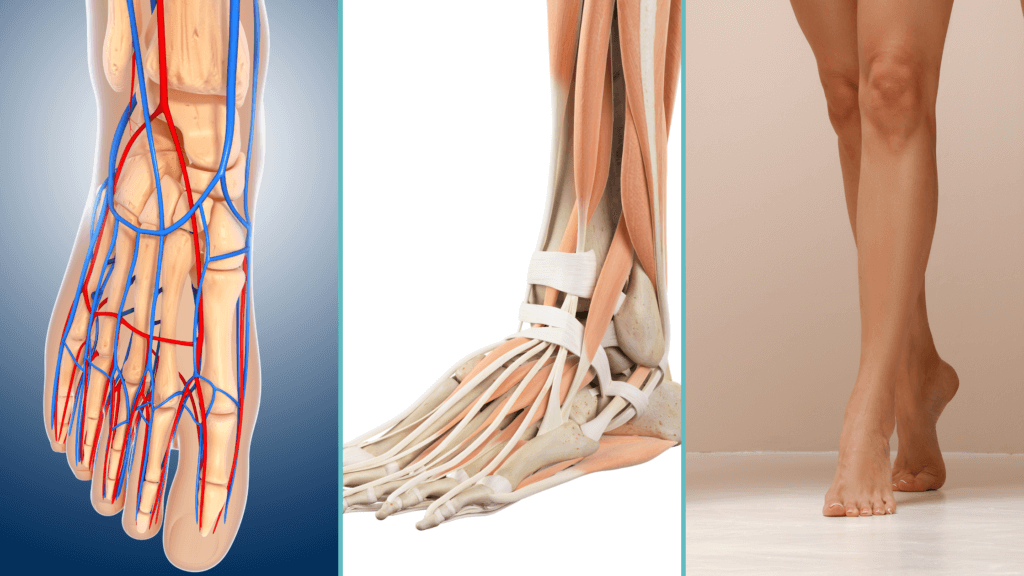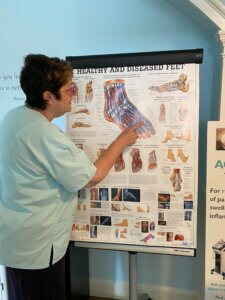Feet are a masterpiece of engineering
People of Langport, you’re probably unaware that April is a BIG month for feet. We have Walk to work week, UK Foot Health Week, National Feet Week and World Health Day. I’m a member of The Royal College of Podiatrists, and they are running a campaign from the 24th – 30th of April, focusing on the “Feet Are A Masterpiece Of Engineering’ (A ‘feet’ of engineering maybe!)
Clearly, I love feet; I think they are amazing. They enable us to do so many things. The aim of my blog this month is to wow and astound you with interesting facts about the feet in the hope that you appreciate and take care of them.

- Each foot is a complex structure consisting of 26 bones, 33 joints, and over 100 muscles, tendons, and ligaments that work together to provide support, balance, and mobility.
- The foot is designed to bear the weight of the body and absorb shock during movement. The arches of the foot act as shock absorbers, helping to distribute the weight of the body evenly across the foot and reducing the impact on the joints.
- The foot also has a remarkable level of flexibility, allowing it to adapt to different surfaces and terrain. It is able to rotate and pivot, making it an essential component of balance and stability during activities such as walking, running, and jumping.
- The average person takes about 7,500 to 10,000 steps per day, which adds up to about 115,000 miles over a lifetime.
- The foot has more sweat glands per inch than any other part of the body, with each foot containing about 250,000 sweat glands. Each foot will sweat about half a pint of moisture every day.
- The Achilles tendon, which connects the calf muscles to the heel bone, is the strongest and thickest tendon in the human body.
- The surface area of the foot is approximately 120 square inches (775 square centimeters), making it one of the largest sensory organs in the body.
- Some people are born with an extra bone in their foot called the accessory navicular bone, which can cause pain and discomfort if it rubs against other bones or tendons.
- The foot is capable of incredible feats of strength and agility. For example, some athletes can jump and land on a single foot with forces of up to 8 times their body weight.
- The ancient Greeks believed that the left foot was a symbol of bad luck and evil, while the right foot was a symbol of good luck and prosperity.
- The highest recorded number of toes on a human foot is 14, belonging to a man from India named Devendra Suthar.
- The feet are one of the most erogenous zones on the body, containing a high concentration of nerve endings that can be stimulated through touch to create pleasurable sensations.

We all need our feet to work perfectly every day; we expect this from our cars, so we give them an MOT and service every year. We know we have to take care of our teeth (if we want to eat), so we spend 4 minutes a day brushing them and visit the dentist every year- how many minutes do you spend every day looking after your feet? Have you ever booked a podiatry appointment just to give your feet a check-up? Maybe it’s time you did. . .
Podiatrists (like me) are the experts in caring for feet. We sort all the obvious things like toenail problems, fungal infections, corns and calluses but we are so much more than that. We know how the foot works mechanically, we can assess, diagnose and treat painful conditions and problems with moving. Our aim is to help our patients live their life with pain-free, healthy feet.
This April (and every month in the future), take a look at your feet, follow the advice on this blog and if you find anything that concerns you, get in touch. I’m here to help.